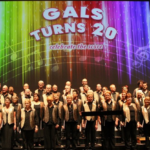Introduction
The principality of Liechtenstein is a charming mountainous landlocked country sandwiched between Switzerland and Austria where “Gay Life in Liechtenstein” is generally comfortable. That is to say, since the entire population of this tiny independent country is only about 35,000 an organized gay ‘scene’ would be so small as to be virtually nonexistent.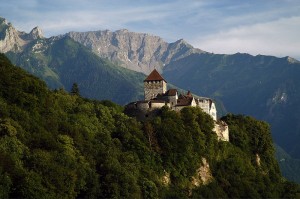 Mostly, gay persons or couples are allowed to be who they are with little or no interference.
Mostly, gay persons or couples are allowed to be who they are with little or no interference.
Compiled by Richard Ammon
GlobalGayz.com
The Gay ‘Scene
Rather, friendship networks are the scene. Inviting several LGBT friends to dinner at home or at any of the many gay-friendly restaurants creates an instant ‘scene’ since there are no exclusively gay bars or clubs in the country to congregate in and formulate activities or policies.
There is also little need to organize. There are few organized enemies here (at least not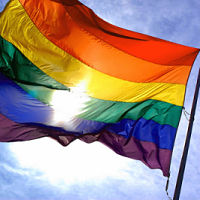 in any significant numbers), no religious extremists, no right-wing skinheads, no political rogues demanding homophobic laws. However, this is not to say the society is clean of opponents of gay life and rights.
in any significant numbers), no religious extremists, no right-wing skinheads, no political rogues demanding homophobic laws. However, this is not to say the society is clean of opponents of gay life and rights.
In 2007, the Office of Equal Opportunity conducted a survey on homosexuality, along with interviews of lesbians and gay men, which revealed a shadow (but not dark) side of the society. “Overall, homosexual persons feel discriminated against, even though they considered the general situation as having improved… The percentage of homosexual persons who had experienced insults, molestation or threats was higher than in the general population.”
It could be noted that most incidents against LGBTs were individual acts or words rather than organizational policies, media campaigns or educational programs aimed against the gay populations in general.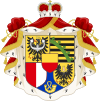
LGBT people are, by far, given space and choice to live as they want, singly or in primary relationships. In many ways, the country is more like a huge family where everyone knows each other and minds their own business with little interference from others. (photo right: country coat of arms)
LGBT Advocacy Group
There is one organized group of LGBT citizens called FLay (Schwule und Lesben – Vorarlberg, Rheintal und Liechtenstein, which was founded 1998, at a time when a gay organization in Liechtenstein was still forbidden by law. FLay meets every third Thursday of the month in our club room in Schaan, the largest town in Liechtenstein. Additionally we meet every week, according to our programs and situations.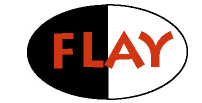
On their website (http://www.flay.li/) the greeting is:
“Nice to see you stopping by here. Our aim is to improve the acceptance of gays and lesbians in Liechtenstein, and be a contact point for all LGBTs. This was the mission of the FLay.
“The adoption of the Partnership Act by the voters in 2011 was a milestone in Liechtenstein; acceptance was reached. The high level of support at the polls showed us that FLay has reached its goal. Now it’s up to us to keep this positive result and go on. On this site all a heartfelt thank-you who have supported us the last few years.”
Partnerships
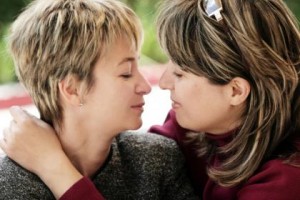 A domestic partnership proposal by the Freie Liste party (and supported by the gay group FLay) was adopted by the Liechtenstein parliament in October 2007. The Minister of Justice Aurelia Frick presented the draft of the registered partnership bill in April 2010 and on 16 December 2010. It was approved by the parliament in the first and second readings in 2011. A referendum was held in June 2011 and 68.8 percent of voters approved the law, which went into effect on September 1, 2011.
A domestic partnership proposal by the Freie Liste party (and supported by the gay group FLay) was adopted by the Liechtenstein parliament in October 2007. The Minister of Justice Aurelia Frick presented the draft of the registered partnership bill in April 2010 and on 16 December 2010. It was approved by the parliament in the first and second readings in 2011. A referendum was held in June 2011 and 68.8 percent of voters approved the law, which went into effect on September 1, 2011.
The Country
The whole country is just over 160 square kilometres (62 sq mi) with an estimated population of 35,000. Its capital town is Vaduz with a population of about 5000 people, most of whom are Roman Catholic. Its cathedral is the seat of the Catholic archbishop. The most prominent landmark of the town is Vaduz Castle, the home of the reigning prince of Liechtenstein and the Liechtenstein royal family. Vaduz has a modest but consistent tourist 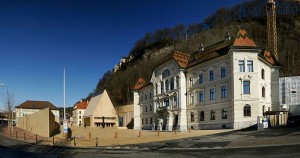 business and is one of the very few capital cities in the world without an airport or train station. Much of its terrain is mountainous, making it a winter sports destination. (photo left: old and new parliament buildings)
business and is one of the very few capital cities in the world without an airport or train station. Much of its terrain is mountainous, making it a winter sports destination. (photo left: old and new parliament buildings)
The largest town is Schaan with a population of about 6000 people–which has the distinction of being the world headquarters of Ivoclar Vivadent, the world’s biggest manufacturer of false teeth, and Hilti, one of the world’s largest makers of anchors and power tools.)
Liechtenstein has the highest gross domestic product per person in the world when adjusted by purchasing power parity, and has the world’s lowest external debt. Liechtenstein also has the second lowest unemployment rate in the world at 1.5% (Monaco is first).
Liechtenstein is the smallest yet the richest (by measure of GDP per capita) German-speaking country in the world and the only country to lie entirely within the Alps. It is known as a as it is a constitutional monarchy headed by a prince. Many cultivated fields and small farms characterize its landscape. The country has a strong financial sector located in the capital, Vaduz, and has been identified as a tax haven (some have accused the country of being a tax shelter for questionable purposes). It is a member of the European Free Trade Association and part of the European Economic Area, the Schengen Area but not of the European Union.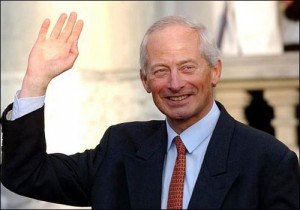
The Prince
The head of the country is the Prince of Liechtenstein Hans-Adam II who is in his upper 60’s. In August 2004 he formally turned over the day-to-day governmental decisions to his oldest son, the Prince Alois, to allow a transition to the next generation. Legally, Hans-Adam remains Head of State, (photo right) which does not mean he keeps a ‘hands-off’ policy in government matters. In 2012, he threatened to veto the results of a referendum which would take away some of his veto powers gained in 2003.
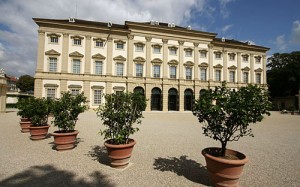 The Liechtenstein National Art Gallery as well as the National Museum are located in Vaduz. However, the private art collection of the Prince–one of the world’s wealthiest persons–is housed in Vienna. It one of the largest and most valuable collections in the world with masterpieces by Hals, Raphael, Rembrandt and Van Dyck and many others.
The Liechtenstein National Art Gallery as well as the National Museum are located in Vaduz. However, the private art collection of the Prince–one of the world’s wealthiest persons–is housed in Vienna. It one of the largest and most valuable collections in the world with masterpieces by Hals, Raphael, Rembrandt and Van Dyck and many others.
The collection was built up over four centuries and comprises 1,600 paintings, sculpture, and other works of art. The royal family has lavished €23 million ($27.4 million) in turning one of their palaces in Vienna into an elegant display gallery. (photo left)
Prince Hans-Adam still buys art on a wide scale.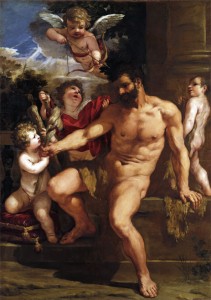 It has been reported that the he spends around €15 million ($17.8 million) a year on art, fortunately now visible to the public. The enormous and beautiful collection has a website: http://www.palaisliechtenstein.com/
It has been reported that the he spends around €15 million ($17.8 million) a year on art, fortunately now visible to the public. The enormous and beautiful collection has a website: http://www.palaisliechtenstein.com/
(photo right: The Punishment of Hercules (1635) by Pietro Berettini da Cortona)

